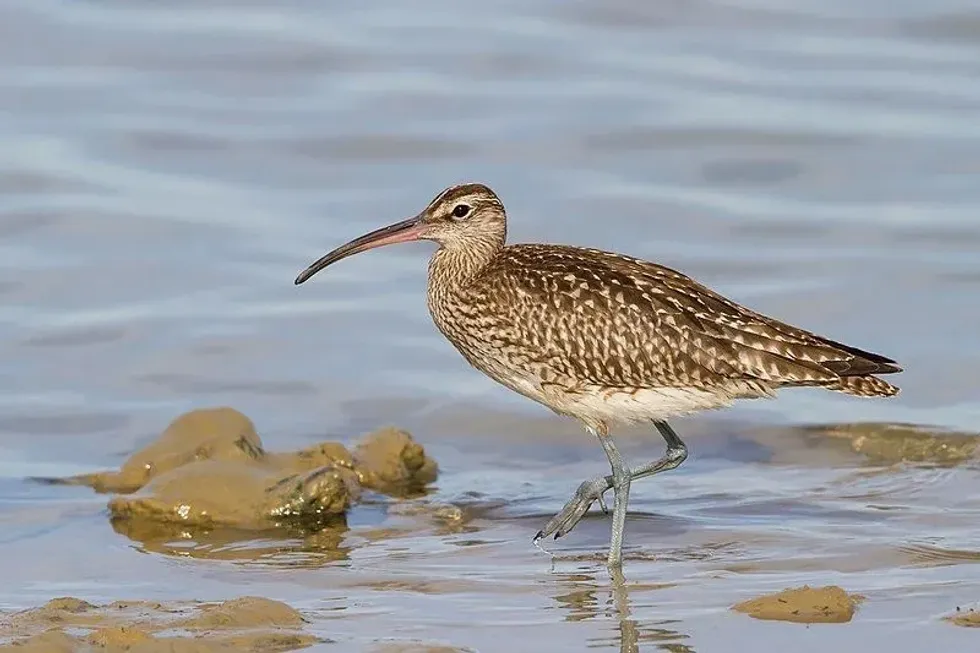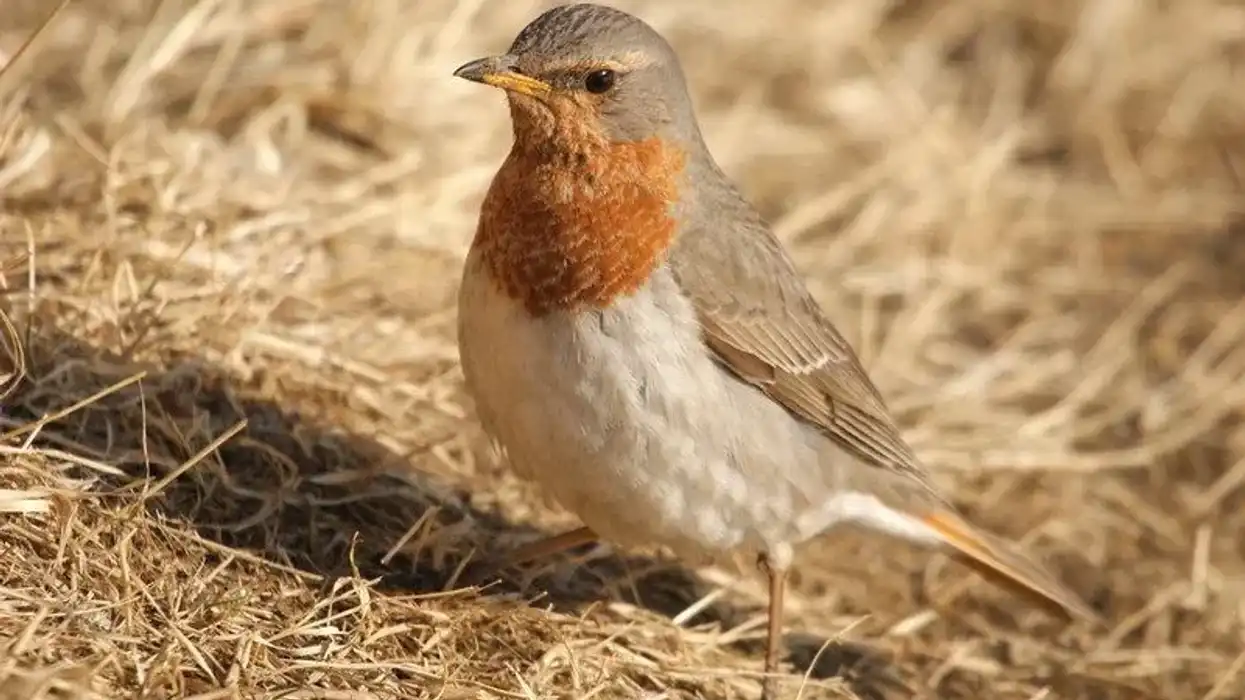The little curlew (Numenius minutus) is the smallest curlew of the world. The name of the species is a combination of the typical feature of the curlew family, the curved bill, and it's size in comparison with the rest of the family.
The species is characterized by a small head and short legs. The head has a black colored crown and the body is heavily streaked with white as well.
A physical description of this species would be incomplete without the mention of its slender, curved bill which can probe at the thick grass in parts of northern Australia in search of food.
The call of this bird is also typical of the family and consists of soft whistles. The distribution range of the little curlew species is most dense in Siberia and northern Australia.
While there is evidence that would term little curlew endangered, some of the curlew species are already extinct. It is also related to the eskimo curlew from North America.
For more relatable content, check out these ancient murrelet facts and common murre facts for kids.
Little Curlew Interesting Facts
What type of animal is a little curlew?
The little curlew (Numenius minutus) is a migratory bird which is a part of the eight species of curlews.
What class of animal does a little curlew belong to?
In scientific terms, the class of animals that the little curlew belongs to is Aves. In other words, we associate them with the class of birds.
How many little curlews are there in the world?
While these birds are considered to be rare, their population size is of a considerable number. The exact population size is unknown, but we do know that the numbers are quite stable since the conservation status of the little curlew (Numenius minutus) is Least Concern.
Where does a little curlew live?
Little curlews are found mostly in wetlands and grasslands where they probe the dry ground, grass, or mud for insects and other small invertebrates. They are also scarcely found in coastal areas, as well as near inland lakes, marshes, or flooded areas.
What is a little curlew's habitat?
The little curlew range map consists of places such as Siberia, northern Australia, southern Australia, Thailand, New Guinea, New Zealand, and Indonesia. Their distribution is also sometimes spotted in parts of Europe and North America.
These birds spend the summers in Siberia where they breed in large colonies. During the winter months, places such as Australia and Asian countries see their populations in large numbers.
Who do little curlews live with?
Little curlews, like other curlews such as North American curlews, are colonial birds. They mix freely with other whimbrels as well and live in large flocks.
They are also colonial breeders which means that this species roosts in large numbers during the breeding months. Their roosting behavior also suggests that this species is fairly peaceful and does not pose a threat to birds of other species, neither are they aggressive or territorial.
How long does a little curlew live?
While the average lifespan of little curlew birds is not known, we do know that the family of curlews (Scolopacidae) has the average life expectancy of 11 years.
How do they reproduce?
The little curlew species is known to breed in Siberia during the summer season. While the clutch size and the nature of the nests that this bird species builds is not known, we do know that these birds are colonial breeders. They form large colonies around the breeding season and make nests in close proximity with other parent birds.
What is their conservation status?
According to the IUCN, the conservation status of the little curlew (Numenius minutus) is Least Concern. This means that this ground-probing species of curlews has a stable population size and that their habitat faces no immediate threats.
While they are not facing any immediate danger, we must note that certain factors such as climate change and degradation of their habitats such as grasslands and mud-laden wetlands can cause substantial damage to this species and its well-being.
Little Curlew Fun Facts
What do little curlews look like?
The little curlew bird species is characterized by a black crowned head and brown colored plumage. The plumage is heavily streaked with white feathers, and the underparts of the bird are pale pink or gray in color.
The pale pink color is continued on the underside of the bill. The bill, which gives them their name, is slightly curved at the end and adapted for probing the ground or grass in search of food.
The legs of this bird species are medium sized and the overall range of their size makes them a medium-sized bird species of the genus Numenius. They have a large wingspan which helps them in taking long any flight, as in the case of migration.
How cute are they?
While you are entitled to have your own opinion regarding the appearance of this vagrant bird species, with its dark crown, slightly curved bill ,and somewhat tall legs, we definitely think that the smallest curlews in the world are also one of the most adorable ones.
How do they communicate?
The calls of the little curlew species is similar to those of the other eight species that are known to us. Little curlews calls consist of repeated soft whistles and are not usually loud. Even when in large groups, this bird species is not known to be too noisy.
How big is a little curlew?
The average length of the little curlew bird from head to feet is around 11.02-13.38 in (28-34 cm). If you are having a tough time figuring out how big or small that would be, these birds are at least twice the size of purple finches and fox sparrows.
How fast can a little curlew fly?
While the exact fight speed of the little curlew bird species is not known, we do know that the little curlew wingspan is large which allows them a stable flight, characterized by short flaps. When flying, these birds tuck their short feet up, so that there is no hindrance.
Flocks of little curlews can often be seen flying in irregular formations.
How much does a little curlew weigh?
The average weight of a little curlew bird is around 0.2-.48 lb (118-221 g). This means that these vagrant winter birds of Europe and North America weigh at least 34 times as much as an average rufous hummingbird and 60 times as much as a bee hummingbird.
What are the male and female names of the species?
There are no distinct names for male and female little curlews, even though they can be told apart by the difference in their sizes. We will simply have to resort to calling them a little curlew male and a little curlew female.
What would you call a baby little curlew?
A little curlew baby is called a chick or nestling which is the same name for all juveniles in the class Aves. They are called nestlings during the period that they are bound to the nest and cannot fly for feeding or recreation.
What do they eat?
The little curlew (Numenius minutus) is mostly seen probing the ground and feeding on insects. They also feed on certain berries and seeds that are scattered in the grasslands that make up their habitat of choice.
Are they dangerous?
There are no records that would suggest that these birds are dangerous to humans or any other bird species. All colonial bird species are known to be peaceful and little curlews are no exception.
Would they make a good pet?
It is unlikely that this species would be a good choice of animals to have as pets since little curlews are colonial birds and only thrive in large flocks. While having entire flocks of curlews is a problem, it would also be difficult to mimic their habitats.
Feeding these birds may also prove to be a major problem since they are not used to being domesticated.
Did you know...
Little curlew eggs are laid in Siberia as they breed here during the summer season.
Places such as north Australia, New Zealand, and South Asian countries see the distribution of these birds due to little curlew migration.
Two out of the total eight species of curlews are extinct. One of the extinct curlew species is the eskimo curlew.
These birds are mostly seen feeding on insects and small invertebrates in their habitats such as open grasslands and mudflats.
The little curlew (Numenius minutus) is related to the North American eskimo curlew which is Critically Endangered.
Do little curlews migrate?
Little curlews are migratory birds that fly to places such as the Australian valleys during the winter months.
How did the curlew get its name?
The family of curlews is named after the slightly curved or curled bill that characterizes all the eight species.
Here at Kidadl, we have carefully created lots of interesting family-friendly animal facts for everyone to discover! Learn more about some other birds from our radjah shelduck facts and glossy ibis facts pages.
You can even occupy yourself at home by drawing one on our free printable curlew coloring pages.









